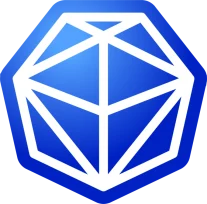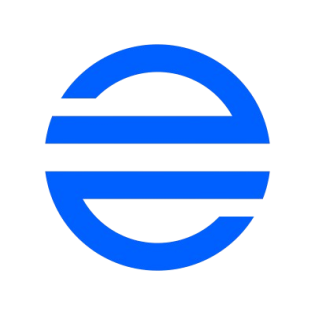On DevvExchange, the DevvE token powers all trades, excluding those in gaming and the metaverse. This system allows seamless exchanges of any asset for any other.


Gaming asset trading will utilize FIAS as its liquidity mechanism.
The Future of Liquidity with DevvE




Austin Rampt, Director of Communications and Engagement at DevvE, goes in depth about DevvE.
DevvE is the exclusive platform token for the DevvX blockchain.
DevvE serves as the global token for creating, owning, and transferring value.
It will act as an exchange mechanism for asset swaps, a payment method for buying and selling assets, and a verification tool for asset creation.
Devvio, the creator of the DevvX blockchain, has no plans to create another coin. DevvE stands apart from most coins with its distinct design, ecosystem strategy, and business model. A similar example would be Ripple and XRP—where XRP is designed for global banking but its mainnet can be used without XRP.
A key area where DevvE holds immense potential is in its role on the DevvExchange, a non-custodial, high-speed, regulatory-compliant exchange. DevvExchange aims to combine the best features of centralized exchanges (CEXs) and decentralized exchanges (DEXs) to provide a solution that is fast, compliant, and non-custodial. Within DevvExchange, DevvE will be used to pay for fees and serve as an intermediary liquidity token for digital assets such as cryptocurrencies, stablecoins, and Real World Assets (RWAs). In this way, DevvE becomes the “money of money.”
DevvE has its own business model and ecosystem, which is being developed by the Forevver Association. While ERC-20 tokens benefit from an established ecosystem, making it easier to list them on crypto exchanges, the decision to implement DevvE as an ERC-20 token is primarily driven by legal considerations. Forevver aims to ensure that everything is properly aligned with regulatory requirements before expanding the use of DevvX’s capabilities. The association is taking a cautious, top-down approach to avoid any issues with regulatory bodies, especially concerning the management of DevvE on a blockchain controlled by a US-based company. As the utility of DevvE grows, Forevver is committed to ensuring its use on DevvX complies with all relevant laws.
Devvio’s founder, Tom Anderson, has been involved in the digital currency and blockchain space since the mid-2000s, even before blockchain was a well-known term. He created a site with digital currency, laying the foundation for his future work in blockchain technology. Tom began following Bitcoin in 2011 and, in late 2015, decided to build a business in the blockchain space. After reading the Bitcoin Whitepaper, he was inspired by its concepts, such as allowing two parties to transact independently without a central authority, and the idea of an immutable public record of transactions. However, Tom realized that the existing blockchain technology did not address key challenges such as scalability, privacy, fraud, stability, cost, and ease of integration necessary for building a scalable business.
In response to these issues, Tom designed a blockchain algorithm to solve these problems and submitted several patents for his innovations. He approached Ray Quintana, an experienced venture capitalist, who saw the potential in the project and left his successful career to join forces with Tom. Ray became Tom’s business partner and helped build Devvio. Along with Bill Anderson (Devvio’s CTO), Nick Williams (Chief Architect), and Shawn McKenney (VP of Infrastructure), the team developed the first implementation of DevvX, which included a unique sharding solution that allowed DevvX to scale infinitely. This shift from software research to development marked the beginning of DevvX’s transformation into the fastest blockchain technology in the world.
Key characteristics of DevvX:
8 million cross-shard transactions per second (TPS)
Energy consumption is 1/3 billionth that of Bitcoin, ISO certified
Transaction costs are 1/10 millionth of Ethereum
Intra-shard transactions have sub-second finality
Simple RESTful API integration
To test its blockchain capabilities, Tom ported his previously developed game, LitCraft, to a modern engine and used it as a testbed for the blockchain. Games provide an excellent environment for testing throughput and speed and became a key testing ground for the DevvX API.
In 2019, Devvio began working on Environmental, Social, and Governance (ESG) applications, and much of the ESG work was spun off into DevvStream, a public company on the Neo stock exchange. DevvStream is now in the process of merging with a SPAC to go public on NASDAQ, and it is managing its data on the DevvX blockchain.
By 2021, the LitCraft game evolved into a full commercial product called LitCraft Nysperience. It now includes the LitCraft Digital Financial Ecosystem (DFE), which allows users to earn, trade, and sell digital assets. This ecosystem includes LitCraft Nysperience with multiple games, Lit Legion (a community-driven project where people can complete real-world tasks for digital assets), and Lit Land (a 3D metaverse application). The token for LitCraft is now called Fias, which was previously known as Quint. A whitepaper for Fias is also on the way and will be managed by the Forevver Association. CoinTelegraph listed LitCraft as the #2 blockchain game of 2023.
In 2023, the Forevver Association was established to address the challenges of managing a token under US jurisdiction. Due to regulatory concerns, Devvio decided to create the Forevver Association, a Swiss non-profit that now manages the DevvE and Fias tokens. On February 7, 2024, Forevver launched the DevvE Token Generation Event (TGE). Within just a couple of weeks, Forevver had significant announcements, including the launch of three exchanges, approval for a French ICO Visa program, and a partnership with a major crypto brokerage.
The overarching vision behind DevvX and DevvE is to bring blockchain technology to society, creating trust, improving transparency, solving environmental challenges, removing intermediaries, enabling people to control their value creation, and ultimately helping individuals reach their full potential. This long-term vision is the legacy Devvio aims to create with its blockchain technology.
While DevvX excels in technical performance (with 8 million TPS, extremely low energy consumption, and cost-effectiveness), the primary differentiator is its sharding solution, which offers more than just throughput.
With DevvX, each application receives its own blockchain or shard, which can be customized according to governance, regulatory requirements, optimizations, and more. These shards can be transparent or auditable as needed. This sharding architecture is rooted in Bitcoin’s original vision of enabling independent transactions between two parties without needing a central authority, while allowing anyone to audit the entire chain.
Furthermore, shards can be tailored to meet the needs of businesses, from IT requirements to legal compliance. For example, a company can use 1,000 shards in 1,000 different regulatory environments, each customized to specific legal jurisdictions.
DevvX’s RESTful API integration makes it easy for web developers to create decentralized applications (dApps) on the blockchain. While other blockchain platforms may require specialized skills, developers can use their existing knowledge to work with DevvX, simplifying the learning curve for traditional web2 developers.
DevvX’s ability to customize shards to any application, guarantee required throughput, reduce costs, and integrate easily with traditional systems positions it as an ideal solution for large enterprises looking to adopt blockchain technology.
Yes! Early tests for cross-shard transactions were benchmarked, and a video demonstrating these results is available.
The DevvX architecture is designed to handle scalability and throughput in a way that sets it apart from other blockchain platforms. By using sharding, each application runs on its own dedicated shard (called a T2 network), and this modular approach allows for the easy addition of more shards to increase throughput. The core challenge in any sharded blockchain system is ensuring that transactions can move smoothly between shards when needed. This is where Devvio’s cross-shard mechanism becomes a game-changer.
In DevvX, the key innovation is the T1 network, which is responsible for managing transactions that move across different shards. The T1 network runs Proof of Validation (PoV) consensus and handles cross-shard transactions. However, it is not a master record and does not act like a traditional “sidechain.” Rather, it functions as a coordination layer for cross-shard communication.
Here’s the critical part: DevvX’s T1 network can process up to 8 million cross-shard transactions per second (TPS). While the vast majority of transactions in most applications will occur within a single shard (which requires much lower processing), the ability to handle 8 million cross-shard transactions per second means that the system’s overall throughput can scale far beyond that—potentially into the tens or hundreds of millions of TPS, or even more, depending on how many additional T1 networks are added to the system.
This architecture is elegantly simple yet highly effective for scaling. The algorithm behind DevvX’s sharding and cross-shard mechanism enables Devvio to manage virtually infinite transactions per second, as long as there are enough computing resources to run the network.
In terms of the proof for the system’s scalability, DevvX has already demonstrated its cross-shard transaction capabilities, and the internal benchmarks for these processes have confirmed that they can handle the necessary throughput. However, the focus shifted from continually testing and proving TPS in the lab to real-world deployment and applications.
Testing systems that can handle millions of TPS is an expensive endeavor, and Devvio found that the cost of demonstrating such scalability was unsustainable for just a proof of concept. Instead, they turned to production deployment, knowing their system can scale as needed. This focus on real-world application development ensures that the technology is not just theoretical but ready for widespread use in real-world scenarios.
Thus, while the system has been proven internally to handle extreme scalability, Devvio’s primary concern now is not further proving TPS but leveraging the architecture to build and deploy real-world blockchain applications.
DevvE’s business model is strategically designed to foster growth and value creation within its ecosystem, with oversight provided by the Forevver Association. The key to understanding the success of DevvE isn’t just the total available supply, but rather the market cap—which is determined by the circulating supply multiplied by the token’s price. The true measure of DevvE’s effectiveness lies in how Forevver manages new token issuances to create value for DevvE, its ecosystem, and stakeholders. This will be the primary way to assess Forevver’s approach.
In Phase 1, DevvE is an ERC-20 token with a hard cap of 300 million tokens in total supply. This phase aligns with more familiar structures in the current crypto landscape. Approximately 100 million tokens will be issued by Forevver within the first year. Beyond that, any new issuances will be used strategically to create value within the ecosystem, supporting its growth rather than being treated purely as a profit-making vehicle.
The majority of the tokens in Phase 2 will be unowned (i.e., not owned by any individual who can sell them for profit). These unowned tokens will primarily be utilized to create liquidity within DevvExchange, a key part of the ecosystem. This ensures that the circulating supply remains focused on creating value and stability, rather than being subject to speculative actions.
Phase 2 will occur once Phase 1 has proven the effectiveness of the current model, allowing for additional token issuances that can be reliably used to expand the ecosystem. At this point, a detailed set of rules regarding token issuances will be introduced. Phase 2 also requires a bridge from Ethereum to DevvX for DevvE, though the bridge could be implemented before Phase 2 begins. In this context, the bridge is necessary for Phase 2, but Phase 2 itself may not even be required if Phase 1 effectively supports the ecosystem’s growth without the need for additional token issuance.
If the model proves successful in Phase 1, Phase 2 may never be implemented. Alternatively, if additional issuance is necessary, it may be drawn out over a long period, spanning decades to ensure that token releases are gradual and responsible. When Phase 2 becomes feasible, it will come with constraints that will regulate how issuances continue to contribute to the growth of the DevvE ecosystem without destabilizing it.
In essence, DevvE’s approach to token management and issuance is driven by a long-term vision of sustainable growth and ecosystem value creation, with a focus on real-world utility rather than short-term speculation.
Get notified when DevvExchange goes live.
© 2025 • DevveCommunity

Get notified when DevvExchange goes live.